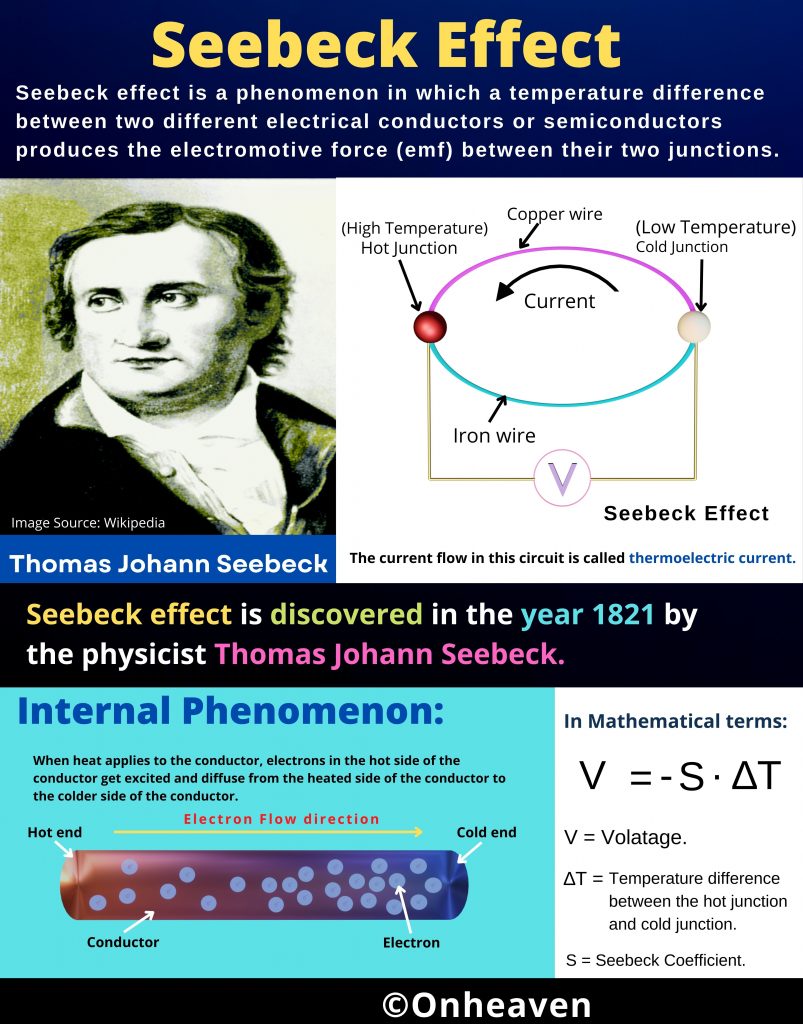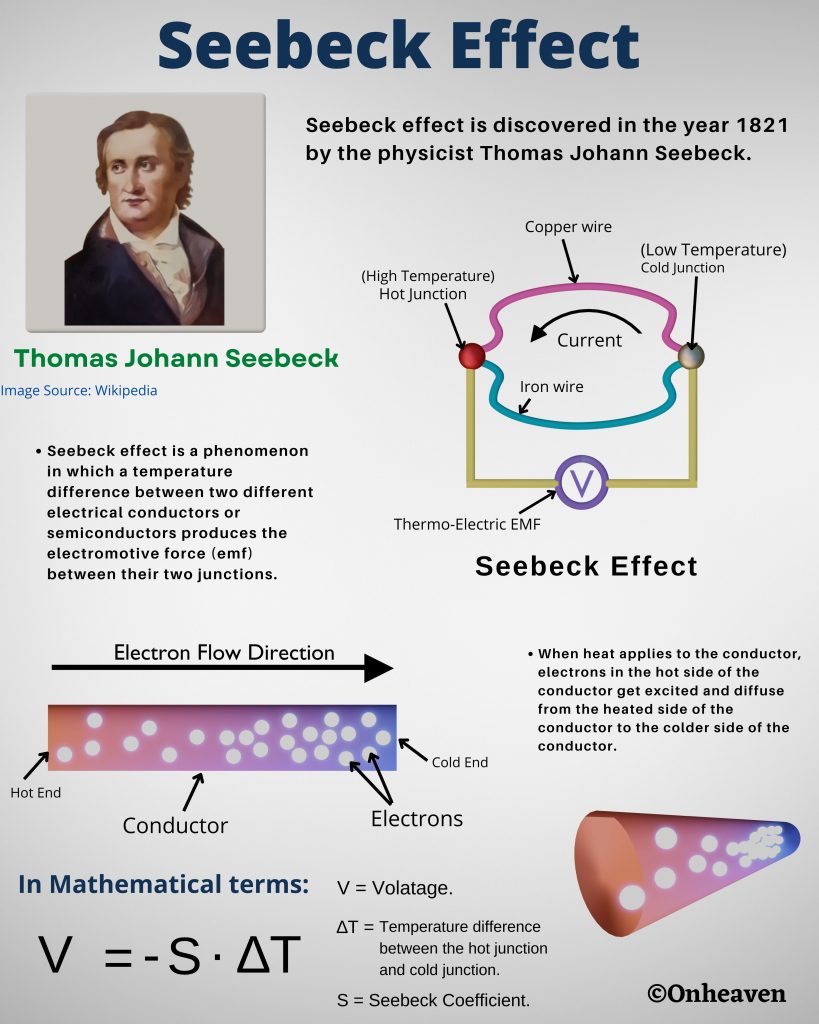Seebeck effect is a phenomenon in which a temperature difference between two different electrical conductors or semiconductors produces the electromotive force (emf) between them between their two junctions.
Two wires of different materials (copper wire and iron wire) are joined with each other in a parallel end-to-end manner.
The points where the two-wire joint is called junction.
By making one junction hot and another junction cold, the current flows through the circuit, this current is called a thermoelectric current, and these two joined wires are called thermocouples, and this whole phenomenon is called as Seebeck Effect.
Current produce due to variation of heat in a wire because when heat applies to the conductor, electrons in the hot side of the conductor get excited and diffuse from the heated side of the conductor to the colder side of the conductor.
Seebeck effect is discovered in the year 1821 by the physicist Thomas Johann Seebeck.
Application of Seebeck Effect:
Thermoelectric Generator.
This is the illustration diagram of the Seebeck effect.


Reference Source:
[1] Seebeck effect | physics | Britannica. In: Encyclopædia Britannica. ; 2022. Accessed April 7, 2022. https://www.britannica.com/science/Seebeck-effect
[2] Wikipedia Contributors. Thermoelectric effect. Wikipedia. Published March 18, 2022. Accessed April 7, 2022. https://en.wikipedia.org/wiki/Thermoelectric_effect
[3] Wikipedia Contributors. Thomas Johann Seebeck. Wikipedia. Published February 4, 2022. Accessed April 7, 2022. https://en.wikipedia.org/wiki/Thomas_Johann_Seebeck
[4] Thermoelectric Effect. https://dducollegedu.ac.in/Datafiles/cms/ecourse%20content/Applied%20Physics_Thermoelectric%20effect.pdf
[5] Electronoobs. Seebeck & Peltier Effect – How Thermocouples & Peltier Cells work? YouTube. Published online September 20, 2020. Accessed April 7, 2022. https://www.youtube.com/watch?v=PccE4WcfnAw